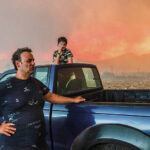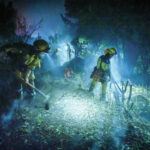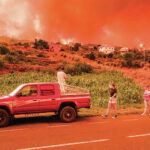From Europe to Canada to Hawaii, photos capture destructive power of wildfires




The destructive power of wildfire has been a defining feature of a summer of climate extremes.
Dozens of people on multiple continents have died. Blazes have reduced homes and businesses to rubble. Thick smoke has darkened skies and carried fine-particle pollution thousands of miles from its source.
It’s a ghastly pattern that climate scientists around the world say has been worsened and fueled by human-caused global warming. Greenhouse gas emissions have greatly increased the chances of hot, dry weather that makes severe fires more likely. And while proper management can help — for instance, controlled burns and clearing out overgrown forests — it’s not always enough to beat the odds as climate change drives fire seasons to start earlier and last longer.
The toll on humans will be great. Beyond the immediate aftermath, experts say that exposure to wildfire smoke can cause long-term issues for human health, with respiratory effects like asthma and COPD as well as impacts on the function of the heart, brain and kidneys. The psychological damage, too, can be lifelong. People in the direct path of wildfires may experience post-traumatic stress or struggle with their mental health after losing their loved ones, homes or livelihoods.
Fire is just one face of climate change, which also drives broiling heat, catastrophic storms and floods and other wacky weather. But the dramatic images of this summer’s infernos, from flames to ash, are a stark reminder of just how much things have changed, and how much we still stand to lose.








